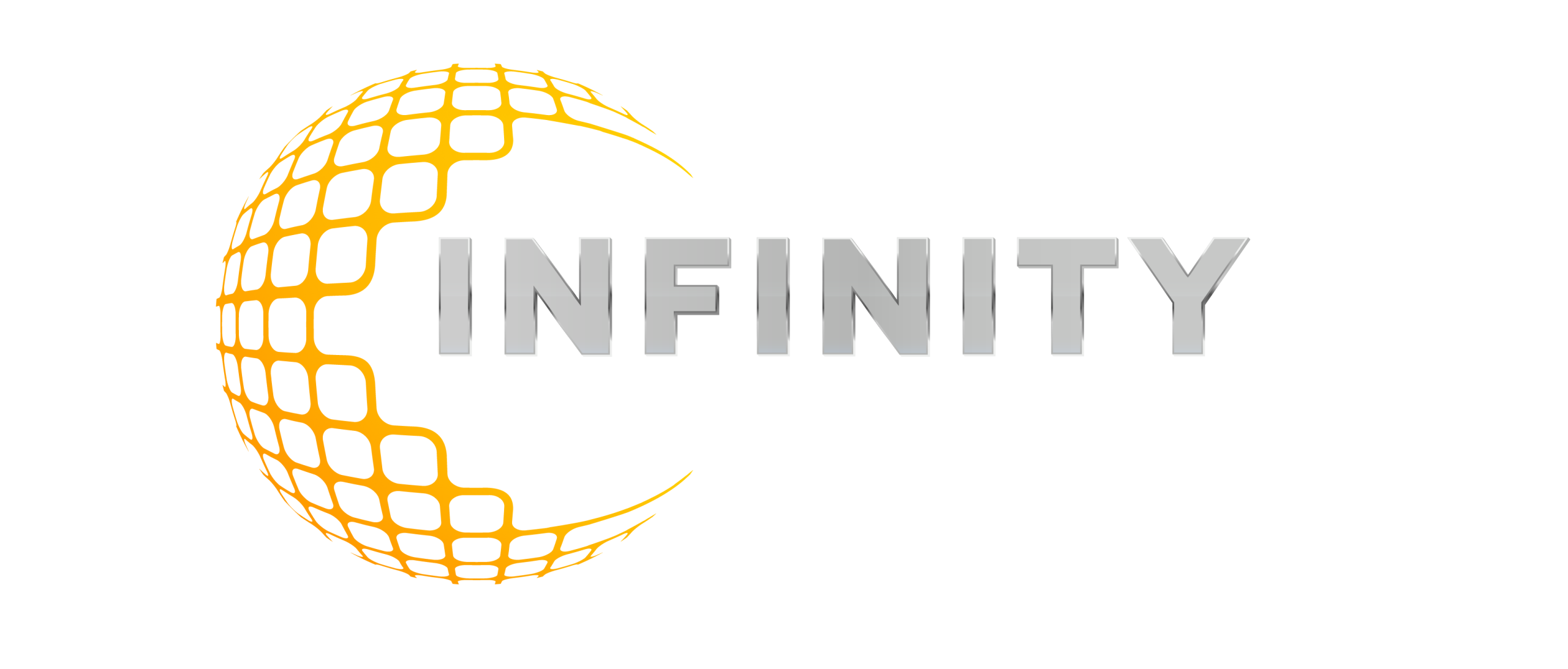At the heart of Infinity Asset Software is a team of passionate, experienced professionals who are redefining what it means to work with a software service provider. Our diverse, hands-on implementation team works directly with each customer to build tailored workflows, configure platform features and ensure a smooth transition from outdated systems to modern, optimized asset management. But we don’t stop there – our commitment to ongoing support means customers are never left in the dark. With real people available to answer real questions, continuous training opportunities and proactive performance check-ins, we’re revolutionizing customer service in the software industry. Infinity’s team doesn’t just deliver software – we become a strategic partner, empowering businesses to succeed through collaboration, accountability and next-level responsiveness. Experience the difference of working with a software company that puts people first and performance at the center of everything we do.

Why Utilization Matters More Than Expansion
In today’s competitive business environment, every dollar invested in equipment and infrastructure needs to deliver measurable value. Many companies, when faced with rising demand or operational bottlenecks, instinctively turn to the purchase of new assets. On the surface, this approach makes sense, more machines, vehicles, or tools should equal more output, right?
Unfortunately, the reality is far more complex. Organizations frequently discover that their assets are underutilized, poorly allocated, or sidelined due to downtime and inefficiency. Buying more equipment only compounds the problem, adding unnecessary capital expenditures (CapEx), higher maintenance costs, and greater operational complexity.
The smarter approach is asset utilization optimization, a strategy that focuses on extracting the maximum possible value from the equipment you already own. By reducing downtime, improving efficiency, and aligning usage with business goals, companies can dramatically improve ROI without purchasing additional resources.
At Infinity Asset Software, we’ve seen first-hand how businesses across industries, manufacturing, logistics, construction, energy, and beyond, unlock hidden potential simply by leveraging technology to track, monitor, and optimize their existing assets. This article explores how you can do the same.
The True Cost of Underutilization
Asset Allocation vs. Underutilization
Asset allocation is about ensuring the right resources are deployed where they are most needed. Underutilization, by contrast, occurs when assets sit idle, are improperly assigned, or are maintained inefficiently. While underutilization may appear harmless, it comes at a staggering financial cost.
Imagine a logistics company with 100 delivery vehicles. If 20 of those vehicles consistently sit idle due to poor scheduling or inadequate tracking, the company has effectively invested in unnecessary capacity. Those idle trucks still incur insurance, depreciation, and maintenance costs, even when they’re not generating revenue.
The Financial Impact
Industry studies estimate that underutilized assets can cost businesses 15–30% of their annual equipment budget. That doesn’t even account for the opportunity costs of capital tied up in underperforming assets, capital that could be reinvested in growth or innovation.
A manufacturing plant may spend millions acquiring new production equipment, only to discover that existing machinery was being used at 60% capacity due to poor scheduling and downtime. Instead of boosting output, the investment only increases overhead.
Why Traditional Tracking Fails
Many organizations rely on spreadsheets, manual logs, or disconnected systems to track asset usage. This outdated approach is prone to human error, lacks real-time visibility, and cannot support predictive decision-making.
Without a unified platform, managers may not even know which assets are underperforming. The result? Continuous cycles of overspending, reactive maintenance, and ineffective allocation.
With Infinity Asset Software, businesses gain real-time insights into asset performance, enabling smarter allocation and eliminating waste caused by underutilization.
Asset Lifecycle Tracking Benefits
Full Visibility From Procurement to Disposal
Every asset has a lifecycle: acquisition, deployment, usage, maintenance, and eventual retirement. Managing this lifecycle effectively ensures assets deliver maximum value over time.
With Infinity, organizations can track every phase seamlessly. From procurement to disposal, lifecycle data is centralized, ensuring assets are properly maintained, assigned, and retired at the right time.
Usage, Wear, and Service Intervals
One of the biggest drivers of downtime is missed or delayed maintenance. Infinity’s lifecycle tracking tools monitor usage levels, service intervals, and wear indicators in real time. Instead of reacting to breakdowns, businesses can proactively service equipment before issues arise.
This shift from reactive to predictive maintenance reduces unexpected downtime, extends asset life, and improves safety.
Predictive Maintenance vs. Reactive Repair
Reactive repairs are costly. Downtime leads to lost productivity, while emergency service calls often come at a premium. Predictive maintenance, powered by real-time monitoring and analytics, ensures equipment is serviced when it needs attention, not after a costly breakdown.
Infinity integrates predictive maintenance into daily workflows, alerting managers to potential issues before they escalate.
Case Example
Consider a construction company operating a fleet of excavators. By implementing lifecycle tracking, they identified recurring downtime due to neglected filter changes. Once Infinity’s predictive alerts were activated, filter replacements were performed proactively, reducing breakdowns by 40% and extending machine lifespans by years. The ROI on software adoption was achieved in less than six months.

Real-Time Monitoring Use Cases
IoT and Infinity’s Monitoring Tools
The integration of IoT (Internet of Things) sensors with Infinity Asset Software provides unparalleled real-time visibility. Equipment usage, performance, and health are monitored continuously, ensuring decision-makers always have accurate data at their fingertips.
Alerts for Downtime and Inefficiencies
Real-time monitoring means managers can react instantly to inefficiencies. If a machine goes offline unexpectedly, Infinity immediately issues alerts, minimizing downtime. If a truck sits idle for longer than expected, supervisors are notified to reallocate resources.
Mobile Dashboards for Supervisors
Modern operations require mobility. Infinity provides mobile dashboards accessible from any device, empowering supervisors and operators to manage assets in the field. Whether in a factory, a remote construction site, or a global logistics hub, managers stay connected to their assets.
Industry-Specific Use Cases
- Manufacturing: Real-time monitoring identifies bottlenecks in production lines, improving throughput.
- Logistics: GPS tracking ensures vehicles are routed efficiently, reducing idle time and fuel costs.
- Construction: Heavy equipment utilization is tracked to ensure fair usage across job sites.
- Energy: Monitoring tools ensure safety compliance while optimizing production equipment.
Each industry sees measurable efficiency gains by reducing downtime and aligning resources with real-time needs.
How Optimization Translates Into ROI
Measurable Gains
The ultimate goal of asset utilization optimization is ROI improvement. Companies that optimize asset usage can expect:
- Reduced downtime (20–40% in many industries).
- Higher throughput without additional equipment purchases.
- Lower CapEx and OpEx, as fewer assets are required.
- Extended asset lifespans, reducing replacement costs.
Financial Examples
A logistics company using Infinity reduced fleet downtime by 25%. This translated into an additional $1.2 million in annual revenue without purchasing a single new truck.
A manufacturing plant improved machine utilization from 65% to 85%. The resulting output increase saved the company from acquiring a $3 million piece of equipment it thought it needed.
ESG and Sustainability Benefits
Optimization isn’t just good for profits – it’s also aligned with sustainability goals. Using assets more efficiently reduces waste, energy consumption, and environmental impact. Companies can highlight these benefits in ESG reports, improving brand reputation and compliance.

Implementation Made Easy With Infinity Asset Software
Seamless Integration
Infinity Asset Software integrates with existing ERP, CRM, and operational systems, ensuring no disruption to current workflows. Whether cloud-based or hybrid environments, the software adapts seamlessly.
Cloud-Based Scalability
As organizations grow, their asset management needs evolve. Infinity’s cloud-based architecture ensures scalability, supporting businesses from regional operators to global enterprises.
Step-by-Step Onboarding
Infinity provides a structured onboarding process:
- Assessment: Understanding current asset challenges.
- Configuration: Tailoring Infinity to fit operational needs.
- Training: Empowering teams with the knowledge to succeed.
- Launch: Real-time monitoring and optimization go live.
Ongoing Support and Training
Adoption is only successful with continuous support. Infinity’s dedicated team ensures businesses maximize software value through ongoing training, updates, and customer success programs.
Maximize ROI Without Buying More Equipment
The path to improved efficiency and profitability doesn’t always require new assets. By focusing on asset utilization optimization, businesses can achieve measurable ROI, reduce downtime, and improve efficiency across every department.
Infinity Asset Software empowers organizations to get more from their existing assets, turning idle resources into revenue-generating machines.
Ready to see how Infinity can transform your operations?
Need Help? Talk To An Expert 1.888.380.9439
- September 17, 2025
- By:admin_6mvdcpp2
- Category:News
- Tags: asset allocation optimization, asset efficiency boost, asset lifecycle optimization, asset management ROI examples, asset performance management, asset utilization optimization, asset utilization software, BreakTheBarrier Software, construction equipment management, EnergyEdge AI, FlowMaker Software, Fresh Focus Media, improve asset ROI, improve operational efficiency, Infinity Asset Software, Infinity Asset Software solutions, IntuaTrack, lifecycle asset tracking, logistics equipment utilization, manufacturing asset efficiency, maximize equipment utilization, Momentum Asset Action Software, Precision Workflow, predictive maintenance software, Professional Service Firm Management, real-time asset monitoring, reduce costs with asset software, reduce downtime strategies, return on investment asset management, ROOK Connect, Supplier & Distributor Coordinated Procurement, Worldwide Supply Chain Management
- no comments
Related Posts
- November 27, 2025
- By: admin_6mvdcpp2
- in: News





